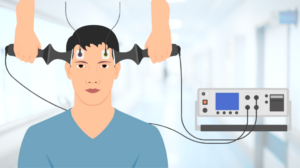During the COVID-19 pandemic, these signs took on new meanings. Online counselling and crisis services gained visibility and experienced a surge in demand as communities entered quarantine. Scared? Check. Imbued with a new awareness of social media and Zoom teleconferencing? Check. Free and anonymous crisis services popping up in google search results? Check.
In 2020, a national research survey conducted by the University of British Columbia and the Canadian Mental Health Association showed a rapid deterioration of Canadians’ mental health during the pandemic’s early stages, particularly in those with pre-existing mental illnesses. The survey found that, compared with the general population, adults with pre-existing mental health difficulties were twice as likely to report a decline in mental health because of COVID-19 and four times more likely to have had suicidal thoughts and to have attempted self-harm. This decline in the mental health of Canadians parallels the massively increased demand for crisis counselling and suicide hotline services during the last few years; some press statements by mental health organizations report increases in calls from 18-200% during COVID-19.
Online crisis and counselling services are here to stay, which is a plus for many! These services are designed to be financially accessible, and some are tailored to particular at-risk populations, including indigenous identifying individuals, LGBTQ+ youth, and post-secondary students. Some services are expanding their coverage; for example, Canada is preparing to add “988” as a direct line to suicide prevention services and counsellors beginning in November 2023.

Telehealth Services Effectiveness
However, this begs the question, do these services genuinely help? What are the pitfalls? Several studies have shown that telehealth for counselling and crisis services is effective and a recent 2021 review comparing in-person, and telehealth services data from 2010-2019 found similar treatment outcomes between them. However, the increased prevalence of these telehealth services is not without issues. The inconsistent quality of services has been observed in studies and reported in personal testimonies, and concerns about patient privacy and security are paramount. For example, Zoom was the initial go-to for many schools and mental health service providers during the quarantine; yet, a quick google search will quickly reveal news articles reporting hacked and disrupted online classes and stolen information.
It is also essential to consider that Canadian regulatory bodies are still adapting to increased telehealth usage and are only beginning to accept billing to provincial public healthcare plans. Patients may pay out of pocket, or services may be charged to a third-party purveyor. Additionally, while widespread telehealth coverage is beneficial, conflicts between a service provider’s jurisdiction are a potential discrepancy depending on how regulatory bodies judge a patient, physician, and licensing’s geographical nature.

Telehealth Experience
With those details in mind, what might you expect if you contact a mental health teleservice? Speaking from personal experience as a crisis responder for Kids Help Phone’s Crisis Text Line service, an anonymous 24/7 text line for youth and adults across Canada, you would engage with a volunteer under the supervision of a social worker or licensed counsellor. Different service models may have different setups for staff and volunteers.
In my position, I received six weeks of training with simulated conversations on a text line platform to learn how to engage empathetically with texters. Simulation training covered how to support suicidal texters, perform risk assessments for self-harm and suicide, mandatory reporting for child abuse, and the social-cultural factors affecting the mental health of indigenous, black, and LGBTQ+ individuals.
When you text “CONNECT,” you join a queue for a crisis responder. Crisis responders are there to provide a listening ear and to engage with you during a “hot” moment as the caller transitions to a cool calm. We may collaboratively work on a safety plan with you or provide resources. For example, Resources Around Me is a Kids Help Phone webtool that can help a texter find local services for free counselling or substance use treatment.
How do you know if a particular service is a good fit? Many telehealth services have a frequently asked questions section or an overview of their services. For example, if you are looking for medical advice, a Canadian helpline, such as “8-1-1″ staffed by nurses may be a good fit. Others, such as Hope for Wellness telehealth service, are tailored towards supporting indigenous individuals.
Nevertheless, accessibility is still an ongoing challenge for telehealth service providers supporting marginalized populations and rural-remote areas of Canada. Telehealth services require internet access or a personal phone. Seniors and homeless individuals are some of the most at risk for mental health challenges. Unfortunately, they are less likely to have internet or smartphone access and may depend on the public libraries and community hubs which can lack privacy for users.

Mental Health Toll
While there has been tremendous awareness and support for mental health during the pandemic, a quieter affliction is playing out. The emotional bill being paid is burnout in mental health professionals and staff shortages, and it’s not improving anytime soon. Kids Help Phone received 4 million calls in 2020, up from 1.9 million in 2019. As a volunteer crisis responder, I can testify that the toll on volunteers and professionals alike is not exaggerated.
To date, I have spoken with a little over 100 individuals on the platform who have struggled with suicidal ideation, self-harm, body image, relationships, sexual assault, loneliness, substance use, homelessness, hunger, surviving suicide attempts, foster care, and post-traumatic stress. Crisis responders never get the chance to learn if a texter is okay after a call, which is challenging if the conversation was dropped by the texter midway or if the conversation ultimately resulted in the texter calling 9-1-1 for additional support.
Most memorably, I spoke to a texter who was a survivor of gun violence who was impacted by the same-day news coverage of the Uvalde 2022 school shooting. So why do we keep going despite the toll? Reasons vary from person to person, but many volunteers have personal experiences related to mental illness and challenging circumstances and feel a strong need to give their time and empathy to this much-needed service. Ultimately, we want to help individuals who could easily have been ourselves, our friends, or our relatives at one point in time.
We all walk by the Union Station help sign (or something like it) on our daily commutes. However, to the individuals who text or call in, perhaps you are a homeless, hungry teen looking for a meal or an overwhelmed single parent whose infant is with family services. Waiting for someone to respond may be unsettling during such strange and painful times, but I promise you, someone like me is there on the other end of the line to learn your story and to offer support.
Eli’s Place will be a rural, residential treatment program for young adults with serious mental illness. To learn more about our mission and our proven-effective model click here.

Carmen Li | Eli’s Place Peer Advisor
My name is Carmen; nice to meet you! I am currently working as a graduate student in oral immunotherapy clinical trials for children with food allergies. You can usually find me at SickKids Hospital. In my spare time, I enjoy trying new recipes and rereading The Sandman by Neil Gaiman.




